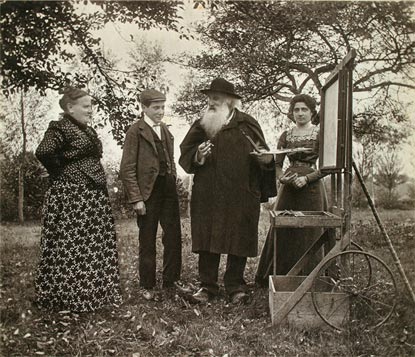impressionist-ART.com
Impressionism & Post-Impressionism
Camille Pissarro - Photography
When Pissarro returned to his home in France after the war, he discovered that of the 1,500 paintings he had done over 20 years, which he was forced to leave behind when he moved to London, only 40 remained. The rest had been damaged or destroyed by the soldiers, who often used them as floor mats outside in the mud to keep their boots clean. It is assumed that many of those lost were done in the Impressionist style he was then developing, thereby "documenting the birth of Impressionism." Armand Silvestre, a critic, went so far as to call Pissarro "basically the inventor of this [Impressionist] painting"; however, Pissarro's role in the Impressionist movement was "less that of the great man of ideas than that of the good counselor and appeaser ..." "Monet ... could be seen as the guiding force."







